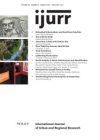This article brings regulation theory and the broader post‐Fordist debate together with an empirical study of the emergence and consequences of tourism in Harlem. It shows that the valorization of cultural diversity, as well as under‐served markets, has helped reposition this formerly unmarketable area in relation to city, state and capital markets. Moreover, as development occurs, the nature of regulation pertaining to Harlem begins to change. The author argues that the failure to disaggregate – to link the elements of the restructuring economy to outcomes for specific areas and residents, leads to an overly pessimistic view. Tourism‐based development may act as an equalizing force, helping to rebalance the uneven urban spatial development characteristic of Fordism and symbolized by the social isolation and concentrated poverty of the racial ghetto in the US. The role of cultural capital as the engine of growth in Harlem, has meant that revitalization promotes cultural differentiation along with standardization. Overall, cultural tourism requires substantial civic engagement. This gives the community control, but at the same time disciplines and stabilizes. Urban tourism thus incorporates a new mode of regulation, making for greater social/political and economic inclusion, but with the associated costs as well as benefits.
Details
Written by:
Lily M. Hoffman
Digital Object Identifier (DOI)
10.1111/1468-2427.00448
About DOI
Read full article as PDF
Read full article as HTML
See the references for this article
